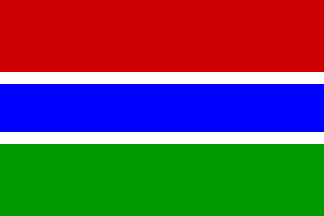| Kunta Kinteh Island, formerly
called James Island and earlier Santo André island, is an island
in the Gambia River, 30 km from the river mouth. The island and some nearby
areas are on the UNESCO World Heritage List because of their role in the
West African slave trade. In Alex Haley's now descredited book and
TV series Roots, Kunta Kinteh is brought by slave ship from this island
to Maryland.
The island was first explored by the Portuguese
in the 15th century, who named it Ilha de Santo André after one
of their sailors, buried there. The first permanent European settlers on
the island were Latvians from the Duchy of Courland and Semigallia. In
1651, the Latvian settlers erected Jacob Fort after Jacob Kettler,
the Duke of Courland, and used it as a trade base. The Dutch briefly held
the fort from 1659 until the English captured it in 1661; the Dutch formally
ceded the fort to the English in 1664.
The English renamed the island James Island
and the fort Fort James after James, the Duke of York, later King James
II of England. The chartered Royal Adventurers in Africa Company administered
the territory, which initially used it for the gold and ivory trade, and
later in the slave trade. In 1695, the French captured Fort James after
a battle with English sailors. In 1702, Fort James returned to British
control. The fort was destroyed and rebuilt several times in this period,
both in conflicts between the English and French and by pirates. On 13
June 1750 the Company of Merchants Trading in Africa assumed the administration
of the Gambia. Between 1758 - 1779, the Gambia was part of British Senegambia.
The island was abandoned in 1870. |

